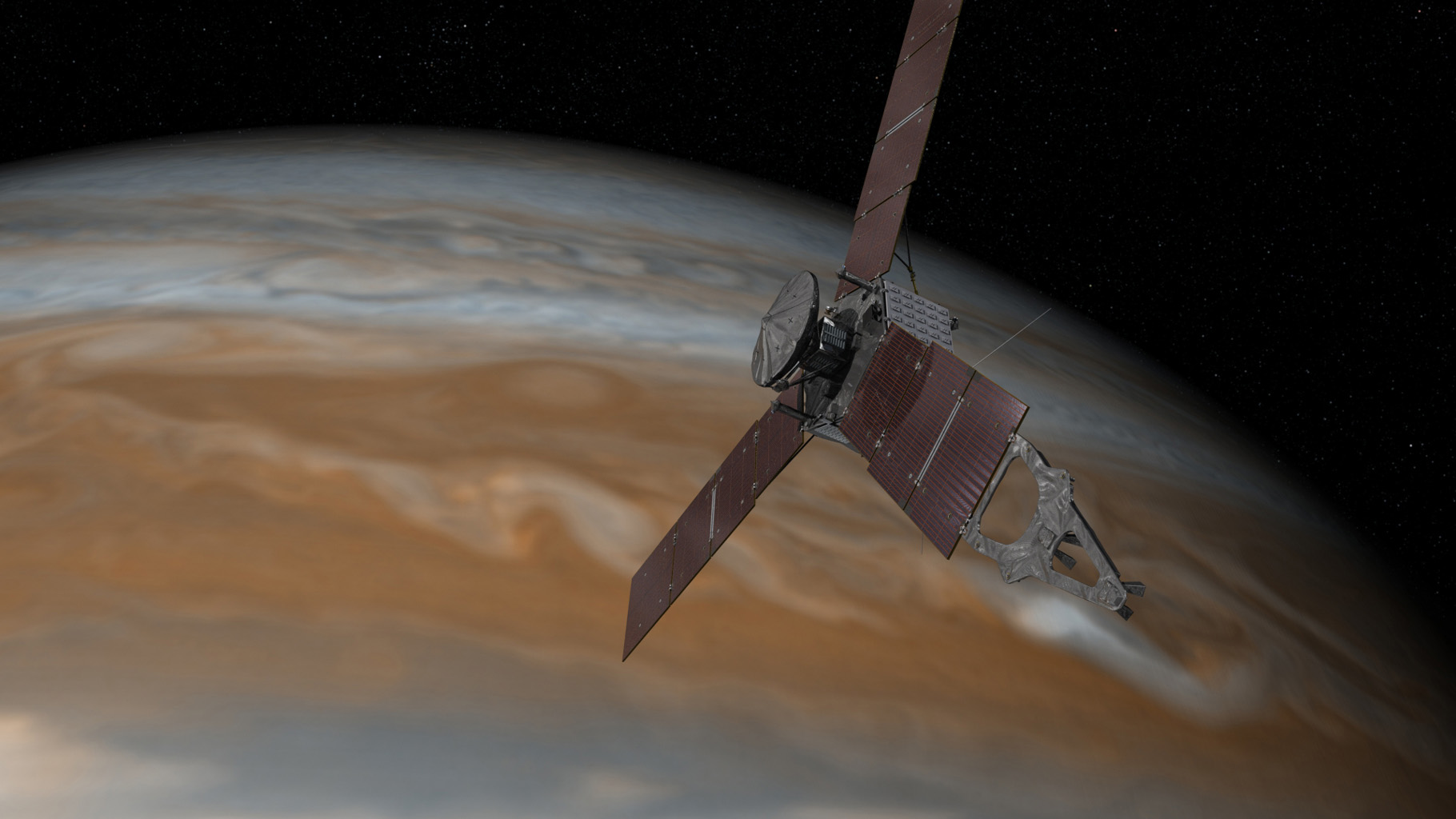
NASA’s Juno spacecraft has been busy orbiting Jupiter and providing fantastic new views of this giant world, something not possible since the previous Galileo mission. While almost flawless so far, the mission has had a few hiccups recently. Juno entered safe mode just shortly before its next close flyby of Jupiter this week, apparently the result of a software performance monitor inducing a reboot of the spacecraft’s onboard computer. The spacecraft is otherwise healthy and Juno is conducting its own software diagnostics to determine the specific cause of the problem. Before this, Juno took its first observations deep into Jupiter’s turbulent atmosphere.
“At the time safe mode was entered, the spacecraft was more than 13 hours from its closest approach to Jupiter,” said Rick Nybakken, Juno project manager from NASA’s Jet Propulsion Laboratory in Pasadena, Calif. “We were still quite a ways from the planet’s more intense radiation belts and magnetic fields. The spacecraft is healthy and we are working our standard recovery procedure.”
The onboard computer rebooted successfully and high-rate data is still being sent back to Earth. Typically, a spacecraft will enter safe mode if its computer detects an anomaly in the general conditions of the spacecraft. It is more of a precaution, so that engineers can assess the problem. Juno turned off its scientific instruments and other non-critical components, but is otherwise healthy with its solar panels still facing the Sun. It is expected that the situation can be remedied soon, as happens in most cases such as this.
Juno first entered safe mode on Tuesday, Oct. 18, at about 10:47 p.m. PDT (Oct. 19 at 1:47 a.m. EDT). The spacecraft conducted its close orbital flyby of Jupiter on Wednesday, Oct. 19, but because it was in safe mode at the time, no science data was collected. The next close flyby is scheduled for Sunday, Dec. 11.
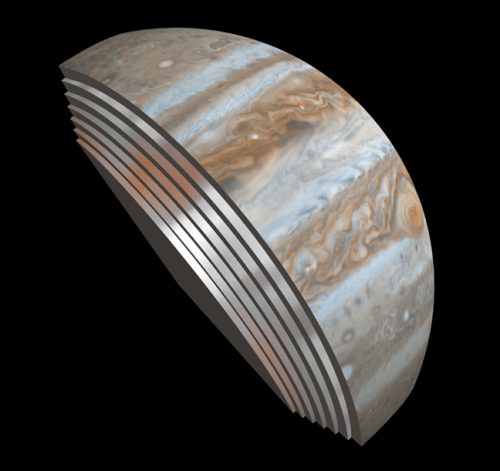
Despite the glitch, Juno has already been sending back a wealth of information about Jupiter. Most recently, it viewed the planet’s highly active atmosphere by peering beneath the cloud tops with its Microwave Radiometer (MWR) instrument; using its largest antenna, MWR can “see” about 215 to 250 miles (350 to 400 kilometers) below the top cloud deck. The upper atmospheric belts and bands which the planet is famous for are also visible at that depth, it turns out.
“With the MWR data, it is as if we took an onion and began to peel the layers off to see the structure and processes going on below,” said Scott Bolton, principal investigator of Juno from the Southwest Research Institute in San Antonio. “We are seeing that those beautiful belts and bands of orange and white we see at Jupiter’s cloud tops extend in some version as far down as our instruments can see, but seem to change with each layer.”
Juno has another camera for taking “regular” photos of Jupiter called JunoCam. It is a public outreach camera, meaning that the public can download and process the photos into final image products. This is the first time such a camera has been used beyond the asteroid belt. These images can be used to help create public and media interest in the mission.
“JunoCam has a small operations team and no image processing team, so we took a leap of faith that the public would step up and help us generate images of Jupiter from the raw data,” said Candy Hansen, JunoCam imaging scientist from the Planetary Science Institute in Tucson, Ariz. “All sorts of people are coming to the JunoCam site and providing their own aesthetic. We have volunteers from all over the world, and they are doing beautiful work. So far all our expectations for JunoCam have not only been met but are being exceeded, and we’re just getting started.”
“The amateurs are giving us a different perspective on how to process images,” Hansen added. “They are experimenting with different color enhancements, different highlights or annotations than we would normally expect. They are identifying storms tracked from Earth to connect our images to the historical record. This is citizen science at its best.”
As reported previously by AmericaSpace, Juno also recently provided beautiful new views of Jupiter’s north and south poles, in both visible light and infrared. The infrared images were taken by the Jovian Infrared Auroral Mapper (JIRAM) and show energetic polar aurora in unprecedented detail.
“These first infrared views of Jupiter’s north and south poles are revealing warm and hot spots that have never been seen before. And while we knew that the first-ever infrared views of Jupiter’s south pole could reveal the planet’s southern aurora, we were amazed to see it for the first time. No other instruments, both from Earth or space, have been able to see the southern aurora. Now, with JIRAM, we see that it appears to be very bright and well-structured. The high level of detail in the images will tell us more about the aurora’s morphology and dynamics,” said Alberto Adriani, JIRAM co-investigator from Istituto di Astrofisica e Planetologia Spaziali in Rome.
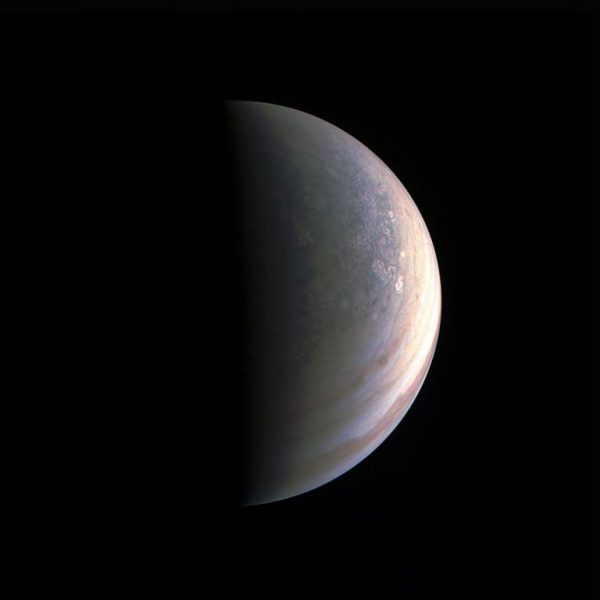
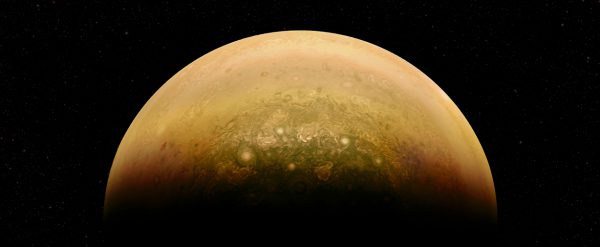
As Scott Bolton of the Southwest Research Institute in San Antonio, Texas and Juno’s Principal Investigator (PI) also noted: “First glimpse of Jupiter’s north pole, and it looks like nothing we have seen or imagined before. It’s bluer in color up there than other parts of the planet, and there are a lot of storms. There is no sign of the latitudinal bands or zone and belts that we are used to—this image is hardly recognizable as Jupiter. We’re seeing signs that the clouds have shadows, possibly indicating that the clouds are at a higher altitude than other features.”
While Saturn has its famous “hexagon” pattern of clouds at its north pole, Jupiter instead has a lot of smaller circular storm eddies, like hurricanes on Earth but much larger. There are no prominent cloud bands like those seen at lower latitudes. The first clear images of Jupiter’s north pole were obtained by the Pioneer spacecraft in 1974. That mission, however, consisted of only a single flyby with less images. Juno is orbiting Jupiter and will take many more images than ever before.
Juno will make a series of 37 planned close orbits of Jupiter; during the first one, it came within 2,500 miles (4,200 kilometers) of Jupiter’s cloud tops.
Juno first arrived at Jupiter on July 4, 2016. This was the first return to Jupiter since the Galileo orbiter mission, which arrived at Jupiter back on Dec. 7, 1995, and lasted until 2003. Before Galileo, the Voyager 1 spacecraft made a single close flyby of Jupiter on March 5, 1979.
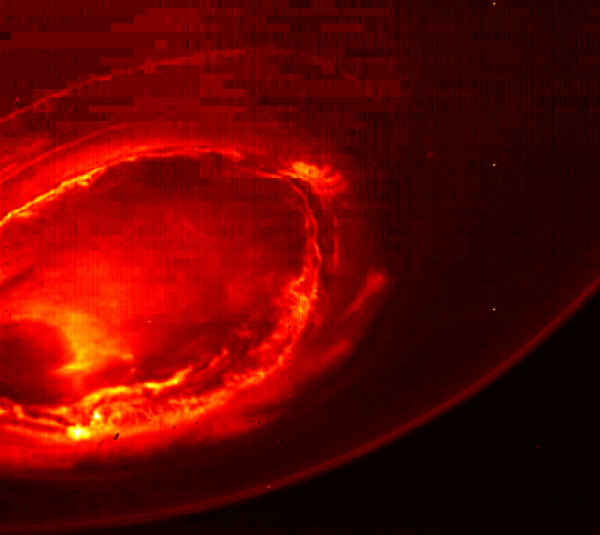
“Independence Day always is something to celebrate, but today we can add to America’s birthday another reason to cheer – Juno is at Jupiter,” said NASA administrator Charlie Bolden. “And what is more American than a NASA mission going boldly where no spacecraft has gone before? With Juno, we will investigate the unknowns of Jupiter’s massive radiation belts to delve deep into not only the planet’s interior, but into how Jupiter was born and how our entire Solar System evolved.”
Juno is the first solar-powered spacecraft to fly to the outer Solar System, first breaking the distance record on Jan. 13, 2016, and the first spacecraft ever to fly with 3-D printed titanium parts. It is also the first time that a spacecraft has orbited so close to Jupiter, beneath the deadly radiation belts.
The main objectives of Juno’s mission include: investigate the existence of a possible ice-rock core, determine the amount of global water and ammonia present in the atmosphere, study convection and deep wind profiles in the atmosphere, investigate the origin of the Jovian magnetic field, and explore the polar magnetosphere. Juno will use nine scientific instruments to accomplish all of this, in what will be the most detailed study of Jupiter ever conducted.
More information about the Juno mission is available on the NASA website.
Want to keep up-to-date with all things space? Be sure to “Like” AmericaSpace on Facebook and follow us on Twitter: @AmericaSpace




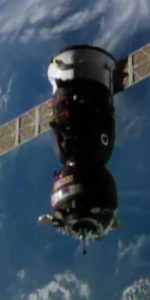

When was the safe mode status reset. Also, some data was collected before the safe mode as Juno peered into the atmosphere right?..